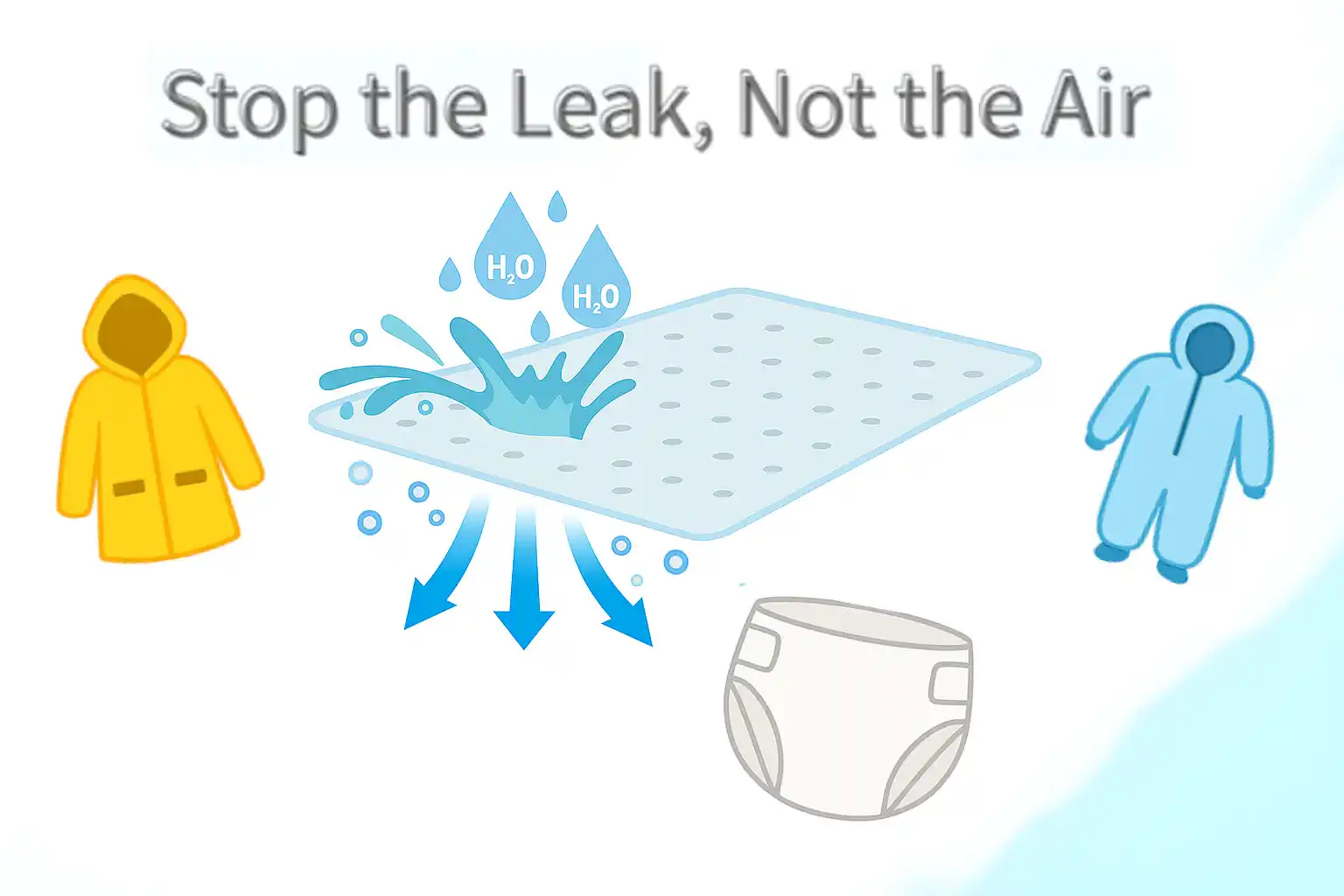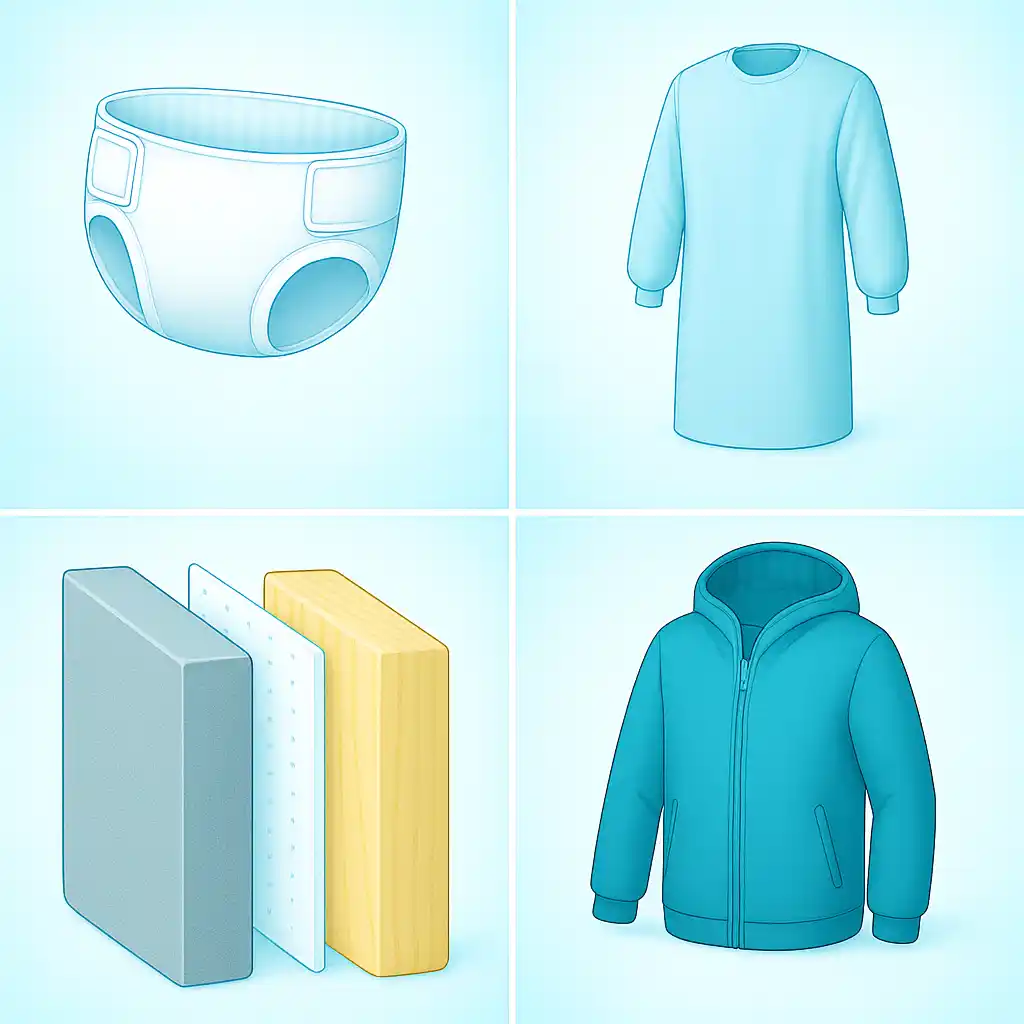Choosing the Right Waterproof Breathable Membrane — Tailored Solutions for Different Applications

It is often assumed that when a fabric is breathable it must also let water leak through. Not so. Products as different as diapers, medical protective clothing, rain jackets, and performance outerwear rely on materials that do two jobs at once: block liquid water and release water vapor. Without that balance, diapers would fail, rainwear would trap sweat, and protective garments would not be safe in use.
Selecting the right waterproof breathable membrane determines how a product performs day after day. Comfort, safety, and durability all point back to this thin layer. So what allows vapor to escape while liquid water stays out, and how should one choose among options for a specific application?
What Is a Waterproof Breathable Membrane and How Does It Work?
At first glance, waterproof and breathable seem to pull in opposite directions. If vapor can pass, why not water? The answer is in pore size and structural design.
Most membranes are made from polyethylene (PE) or polypropylene (PP) microporous films. Their nanoscale pores are small enough to block droplets yet large enough to let water vapor molecules move through. Surface tension and capillary action do the rest, which is why users stay dry while excess moisture can still dissipate.
Two principal designs are common:
Membranes are rarely used alone. They are laminated with nonwoven substrates, adjusted in thickness, or treated for printing, color, or surface finish. This is why the same principle shows up in very different products:
Common test methods used to specify performance include:
- ASTM E96 for moisture vapor transmission rate (MVTR)
- AATCC 42 / AATCC 127 or ISO 811 for hydrostatic resistance (often reported as mmH₂O)
- ISO 9237 for air permeability
- AAMI PB70 Levels 1–4 for medical barrier classification of finished gowns
Different Applications Require Different Membrane Properties
There is no universal “best” membrane. Priorities shift with the use case: MVTR, hydrostatic head, mechanical strength, processability, or simply how the fabric feels to the touch.
- Baby diapers: Thin, soft laminates that balance heat dissipation with leakage prevention. Comfort matters because the material stays against skin for hours.
- Adult incontinence products: Higher MVTR with stable lamination and reliable waterproof performance under load. Branding often requires consistent printability.
- Medical protective clothing (isolation and surgical gowns): Barrier function and tear strength come first. Constructions are validated against AAMI Level 3–4 using liquid impact and hydrostatic tests to resist splashes and pathogens.
- Building wraps: Thicker and more robust to withstand prolonged UV, wind, and rain. Hydrostatic head and dimensional stability outweigh softness.
- Technical rainwear and outdoor apparel: Comfort and mobility take priority. High-MVTR membranes are laminated to stretch or specialty textiles and can be colored or printed to suit design needs.
Grouped under the same name, waterproof breathable membranes still differ in structure and emphasis. The right choice depends on where the product will be used and what the wearer expects.
Choose Your Membrane Based on Application — Not Just the Label
A diaper, a medical gown, and a rain jacket clearly do not require the same construction. We work with global brands and OEMs to develop custom waterproof breathable membrane solutions for hygiene, healthcare, industrial protection, construction, and outdoor apparel.
FAQ
Q1: Are all waterproof breathable membranes equally waterproof?
No. Waterproof ratings vary by structure, thickness, and processing. The practical benchmark is the hydrostatic head value (mmH₂O), which indicates the water pressure a material can withstand before leakage.
Q2: Why laminate membranes with nonwoven fabrics?
Lamination improves strength, surface stability, and comfort. For skin-contact products such as diapers, outerwear, and medical gowns, a membrane-to-nonwoven laminate delivers durability and a softer hand feel.
Q3: Is a single-layer membrane enough for medical PPE?
It depends on risk level. Entry-level isolation gowns (for example, AAMI Level 1) may use a single layer. Higher-risk applications (Levels 3–4) typically specify laminated constructions that meet liquid impact and hydrostatic requirements.
Q4: Can properties be customized for a specific application?
Yes. We tailor MVTR, hydrostatic resistance, thickness, color, and print compatibility to the product and process, then validate the result against relevant test methods.
